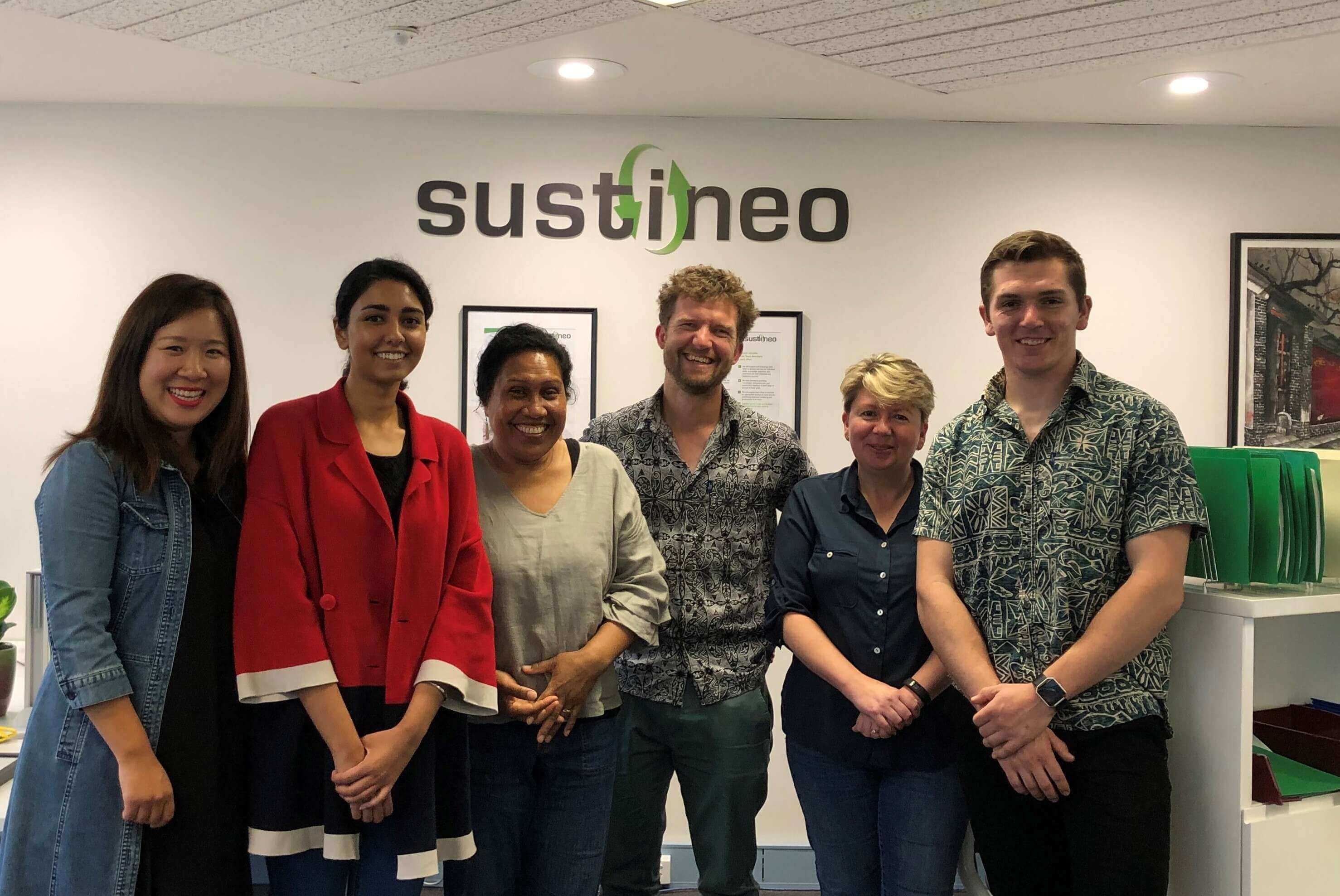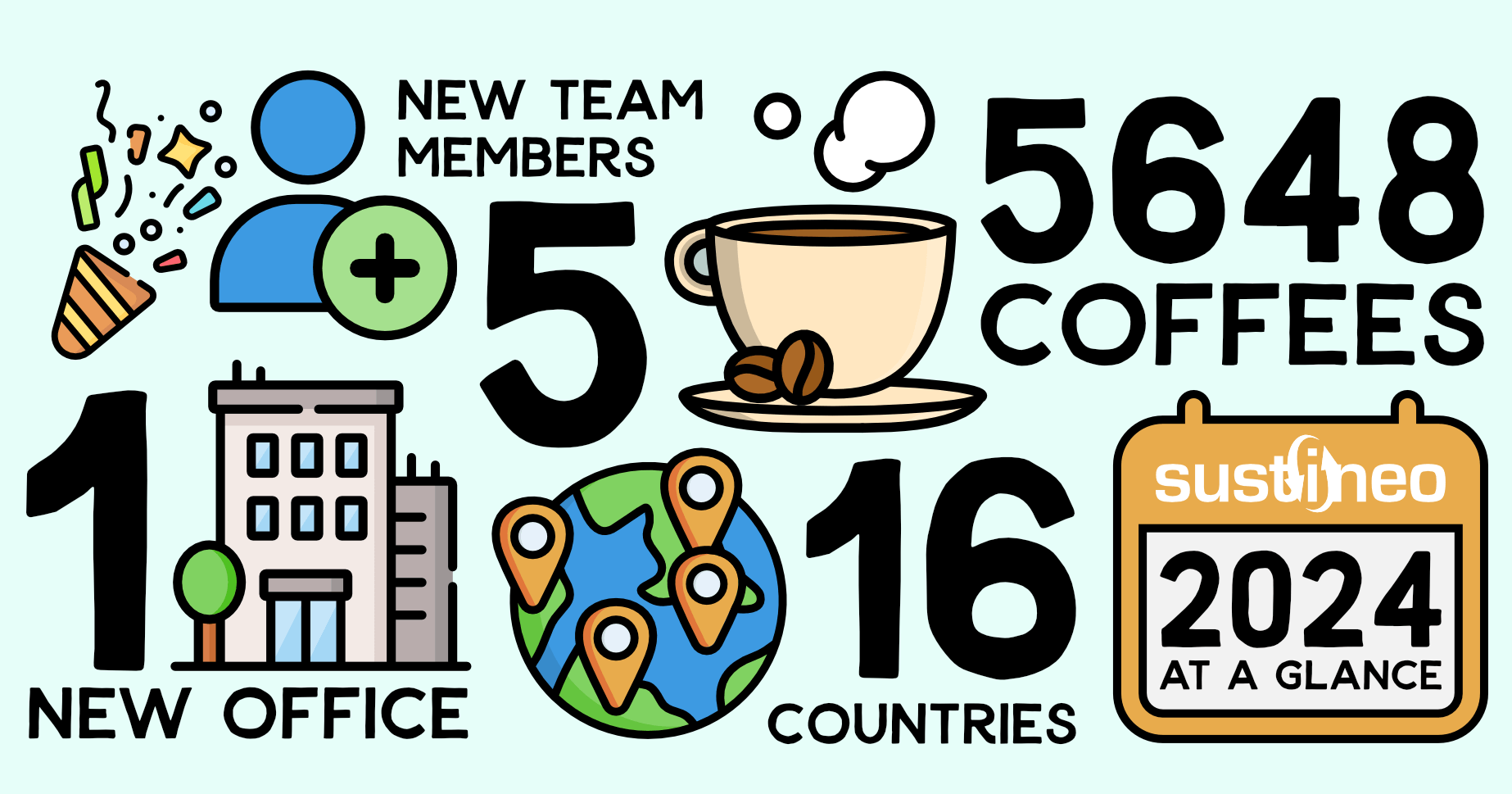This is the second of a two-part blog reflecting on Sustineo’s journey since August 2019. This piece is focused on the post-COVID-19 period including how we – as an organisation – have managed an exceptionally challenging period. Like in Part One, these reflections follow a series of themes loosely grouped chronologically. Again, if you aren’t interested in the narrative, the lessons are at the end!
Riding the wave of optimism (December to March 2020) … then being dumped by the wave (March 2020)
In late 2019, we were riding a wave of positivity and optimism. Complemented by the efforts invested into staff engagement (see Part One), during the year we had delivered some highly complex and important work, expanded the team with some great new people, and had been recognised as winners in multiple categories at the ACT Export Awards and as finalists at the National Export Awards. This was carried through to the early parts of 2020.
The emergence of COVID-19 both shocked and changed the world. For Sustineo, it changed our operating landscape significantly. Within a week, over a third of our projects were deferred indefinitely and for other projects there was initial uncertainty around how they could continue. This complete uncertainty made us reconsider our business viability. This crash was felt by the whole team. Our subsequent approach to managing our response is something that I think we did broadly well, and have learnt a lot from, but it was hard for the organisation and the people within it.
Being decisive amidst complete uncertainty and communicating with openness (March 2020 onwards)
As an Executive team, we knew we needed to act swiftly and decisively to respond to the business uncertainty brought by COVID-19. In stepping out this process, we shared our COVID-19 response plan with the team early and were transparent with the principles that were shaping our response. We also asked the team for their views on ways to manage the situation. It was a time of crisis, uncertainty and there was no utility in not being open with the staff about our situation.
An important part of our response was the way in which we communicated. In the context of uncertainty, we wanted to be honest and transparent. Every week, we provided an update on our position. We discussed the possible implications and how that would impact people’s roles. We were open with what our best - and worst - case scenarios were for both the organisation and individuals. We continued this dialogue through the following months.
This approach aligned to the type of engagement we had sought to foster through the later part of 2019 and early 2020. It was important in maintaining – and hopefully building – trust within the team. This was our opportunity to ‘walk the walk’ as an ethical and principle-based organisation. We tried to do this and I think on the most part we have succeeded.
As for many companies, navigating this period was challenging. Government support in the short term was important and provided some assurances. This was, however, not without other hard decisions and a restructuring of the organisation and associated roles. This had a clear impacts for some team members and led to a series of the most difficult discussions I have had to make in my professional life.
Looking for the silver linings and towards 2021
In writing of silver linings for COVID-19, I think you need to be very careful – the last six months have been terrible for many and the impacts are far from over. However, there are a few things which I think are worth recognising and – I hope – will continue into the future:
- Stronger focus on and dialogue about wellness. Since March, we have made a concerted effort to support the team with wellness within work and beyond. We have trialled a variety of responses, with some fizzling and others succeeding and sustaining (see here for more on this). This emphasis on wellness has become a normalised part of how we support each other, and maintain our most productive selves at work.
- Greater flexibility in work arrangements. While we had flexible work arrangements previously, the transition to working from home on an on-going basis – and the success of it – is something we will factor into our future of work.
- Transparent, open and honest communication. Through our toughest periods we sought to take a transparent, open and honest approach to communication. If we can do that during the toughest times, we can and should do so during the recovery and beyond.
- Recognition of our partners in the Pacific. A core element of Sustineo’s working model has been our approach to working with local partners. During COVID-19, we were able to complete work remotely in the Pacific thanks to the relationships built in the past. This reaffirms the importance of our relational, rather than transactional, approach to building our networks.
- Further embedding “shared ownership and collective responsibility” in our work. Sustineo’s response has embodied the principles we laid out pre-COVID-19 (see Part One). I have been grateful for the efforts of all team members in taking ownership and responsibility for our work and organisation. This is a part of our culture and practice that we will continue to foster.
In our review of 2019, we noted:
“As the best organisation’s always do, when the going gets tough, the team unites, finds a way through, but maintains a spirit of kindness and mutual support. That’s the Sustineo way and it will remain a feature again in 2020.”
I am proud to say that for the most part we have been able to enact this feature in trying times during 2020. I am grateful that I am in the role that I am in and I look forward to working with my colleagues in delivering the important work we do into the future.
Lessons learned
Navigating Sustineo through a global pandemic was not something I had expected to do when I was starting in the CEO role. It has been challenging and there have been many times where I have been gripped by doubt and uncertainty about the best way to navigate things for the organisation and people within it. I have faced the toughest decisions I have experienced in a professional capacity, but at no point during this process have I been alone. I have learned a lot, and some of these key lessons are listed below.
1. Focus on what you can control, but don’t ignore what you can’t control. Through 2020, it has at times been difficult to not be overwhelmed by the despair and uncertainty caused by COVID-19. Focusing on what you can control, but recognising that it is shaped by the surrounding uncontrollable, has been key to how we have managed over the last six months.
2. Communication is key. Building trust is important for how teams function. The last 12 months has highlighted the benefits of clear, honest and transparent communication. This was a realisation prior to COVID-19, but the pandemics’ emergence has heighted my view of its importance.
3. Hard discussions are the ones to run towards, not away from. Deferring difficult discussions does not solve problems or win friends. While you do need time to consider difficult issues carefully, tackling them front on helps address them actively and early, rather than deferring and becoming even more difficult.
4. Own your decisions and learn from them. Even though I do not view leadership as a lonely endeavour, you need to take ownership for your decisions. COVID-19 has brought about situations where you feel there is no ‘winner’ in any decision you might make. Taking a principled approach that you can own is important, as is learning what you can do better.
5. Always operate with kindness and compassion in mind, including with yourself. Regardless of the context, you can be kind and considerate of others and to yourself, even in the hardest of times. In fact, the hardest of times is when kindness and compassion is most important.
Sustineo is a learning organisation, and these lessons are shared in that context. If you have comments or reflections on anything written here, we – and I – would welcome to hear from you.
Email Tom Sloan at tom.sloan@sustineo.com.au.



